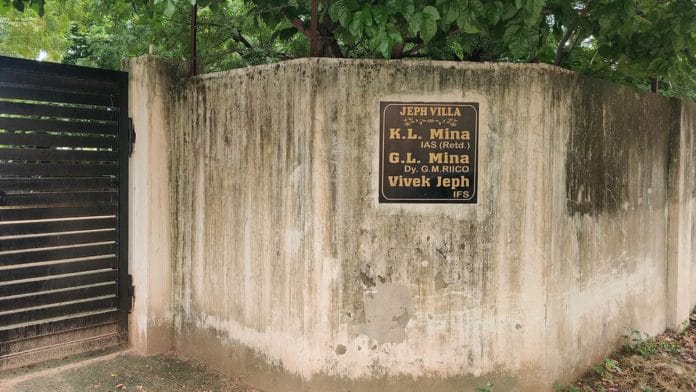Nayabas (Neem Ka Thana): It was a Rajasthani village mostly known for theft and illegal liquor business. Then, it started producing IAS, IPS, IRS officers by the dozens. In fact, it ticked all the boxes with record numbers in police, railways, banks, central forces, medical, and teaching jobs. But it was only when a young woman from the crime-scarred Nayabas village became the first judge in 2020 that the old image was completely wiped clean.
Abhilasha Jeph’s selection as a judge was a public celebration. A car convoy with a DJ and dancing children celebrated her victory. Women in traditional Rajasthani clothes cheered her on. Among them was Sarita Meena, who vowed that day to educate her daughter and make her a big officer too.
That jubilant day was a turning point for many young girls in Nayabas, located in Rajasthan’s Neem ka Thana district. Now, Jeph is the Additional Civil Judge in Deoli Court of Tonk district, and Sarita Meena’s daughter is in middle school.
“We have seen a lot of celebrations in the village when men were selected. But that day was a big achievement for women,” said Sarita, sitting in the courtyard of her home in a green floral sari. “Everyone started dreaming of educating their daughters. All this is happening in a village which was once infamous. It’s all due to education.”
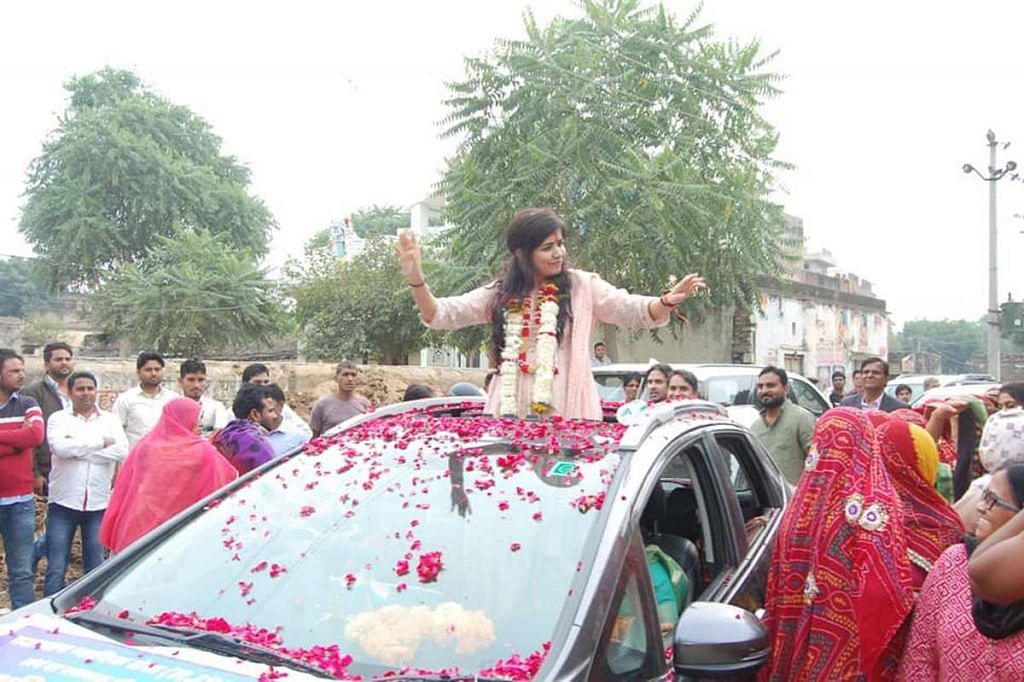
Before Jeph made history, other women had broken barriers here too, including Alka Meena, a 2010 batch IPS officer, who is currently serving as Punjab Deputy Inspector General of Police (DIG).
The power of IAS-IPS-IRS is palpable in this Meena-dominated village, which gradually transformed from crime-infested to an adhikariyo ka gaon (officers’ village) over the last four decades. Out of the roughly 500 people with government jobs currently, 10 are UPSC officers, and more than two dozen are in state services like the Rajasthan Administrative Service.
Now, hoardings of coaching institutes with toppers’ faces are plastered everywhere on the walls of Nayabas. It’s a village of aspiration, and is even called an “IAS-IPS factory”.
The line-up of high achievers includes DIG Alka Meena, Indian Revenue Service officer Shree Ram Meena, Indian Economic Service officer Ajay Jeph, Assistant Superintendent of Police Rajendra Meena, IFS officer Vivek Jeph, and retired IAS officer KL Mina.
Nayabas’ role models are not celebrities but neighbours and family members who’ve cracked the corridors of power. But these ‘idols’ are not on some distant pedestal. There’s a strong culture of mentorship.
Also Read: Face of Rajasthan’s coaching hub is changing. Everyone’s rushing to Sikar after NEET success
Role models everywhere
Ankit Jeph, 24, is working hard to ace his B.Ed exam. His goal is to become a mathematics lecturer in a government college. His brother Alok is a customs inspector in Agartala. For Nayabas youth like them, education is not just a pathway but a lifeline.
“There’s a huge shortage of water here, so we cannot depend on farming. We can only sow crops once a year during the monsoon,” Ankit said. “In such a situation, education is the only way forward.”
Ankit’s perspective is common among the young people in Nayabas. Education and achievement are frequent topics of discussion here, from young parents to village elders. The role models are not celebrities but neighbours and family members who’ve cracked the corridors of power.
When I became an IAS officer in 1975, my voice got strengthened, and people understood the respect that comes with the job. This started the process of education in the village
-KL Mina, retired IAS officer
But these ‘idols’ are not on some distant pedestal. There is a strong culture of mentorship here. After getting a government job, people do not distance themselves from their village but remain in constant touch and help the community move forward.
“Retired officers constantly talk to the new generation and guide them,” said Ankit.
Twice a year, on August 15 and January 26, village programmes are organised to discuss problems and the youth’s future, presided over by illustrious residents and visitors. Among them is SR Meena, a retired ONGC official, who frequently travels from his Mumbai home to Nayabas to mentor young people. It’s his way of giving back to his birthplace.
“I often go to the village schools and tell the students which stream or course they should pursue,” he said.
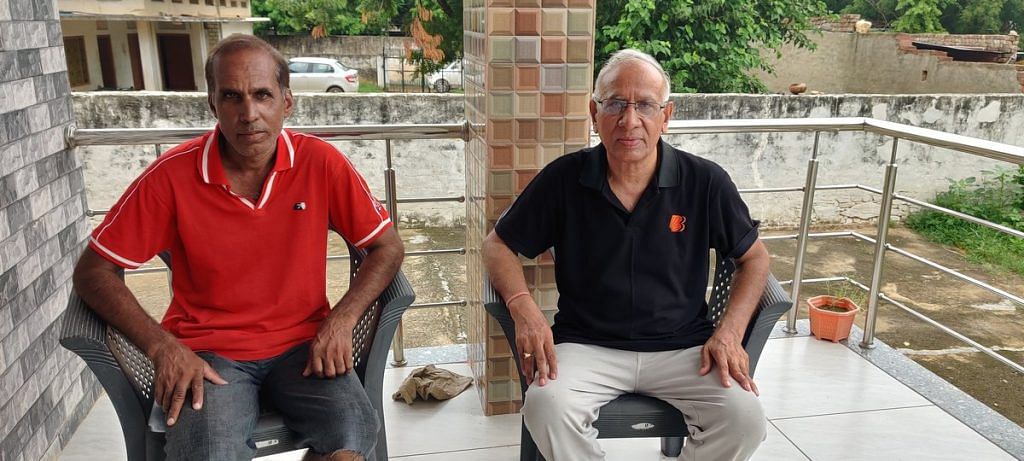
Apart from three government schools, the village of roughly 800 households also has its own college—set up by retired 1975-batch IAS officer KL Mina so that youth wouldn’t have to travel far to study. For university education, most students go to Sikar, some two hours away. Most are self-funded rather than relying on loans since almost every household has a serving or retired government employee. If there’s one grouse among students, it’s that the village doesn’t have a library yet.
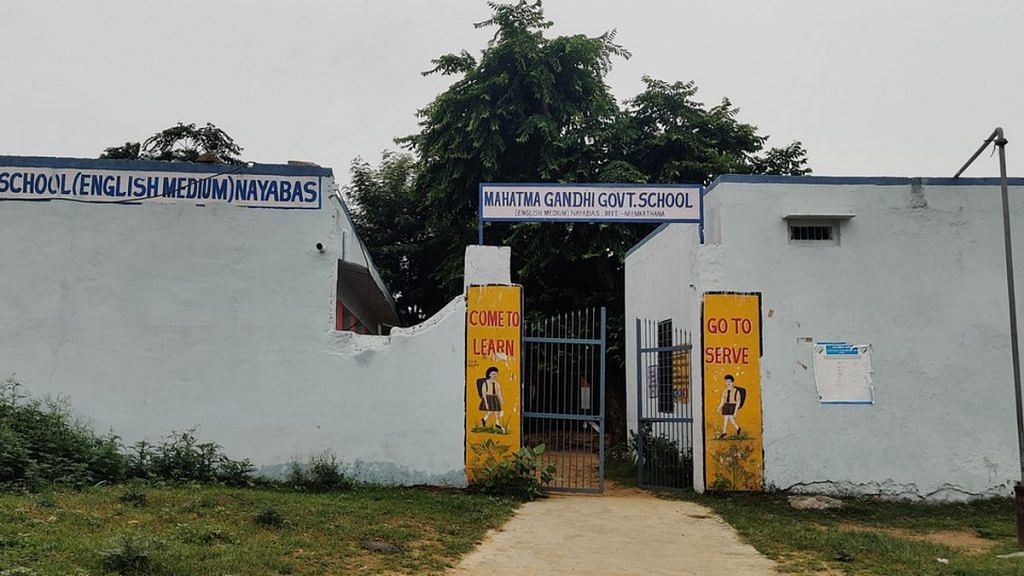
In 2000, when Ankit Jeph was born, Nayabas was already shedding its infamy, but all the children know the cautionary tales about not sticking to the new path charted for them.
“When I was born, the village identity had changed. I saw an environment of studies right from the beginning. Everyone has only one goal—to get a government job. There is no other option here,” he said, sitting at the study table in his room.
Like many other Nayabas residents, Ankit’s family uses their gotra, Jeph, as their surname instead of Meena. It’s part of their shiny new identity.
A widespread sense of injury and insult following a police crackdown in 1972 proved to be the catalyst for change for Nayabas.
The turning point
It took half a century for Nayabas to change its image and it was no easy feat.
The village, surrounded by the Aravalli Hills, was once notorious for crimes like cattle theft, illegal liquor trade, and robberies. The stigma was particularly heavy for the Meena community—which makes up all of the village’s households, except for the family of the OBC sarpanch.
The Meenas, an influential Scheduled Tribe community in Rajasthan, make up about 7 per cent of the state’s population and are prime beneficiaries of the 12 per cent ST reservation. However, their history includes a painful legacy: they were labelled a “criminal tribe” during the British Raj and continued to be criminalised under the Rajasthan Habitual Criminals Act 1950. It was only on 31 August 1952 that they were finally cleared of this label.
Around 1920-30, the villagers would give their daughters to only those boys who could steal. Because that was the only source of income. Theft used to make people’s identity
-Ankit Jeph, Nayabas resident
But even decades later, Nayabas couldn’t shake off the negative stereotype. One incident in 1972 changed everything. This event was a wake-up call and led to the village realising that education was its only hope for a new beginning.
It all started with a land dispute. Some residents of Nayabas owned a disputed piece of land in a nearby village and the conflict escalated to Khetri Court, 55 kilometres away. During one journey to the court, five villagers from Nayabas were allegedly killed by their land rivals. In retaliation, the villagers killed a man.
This heightened tensions in the area, but no one expected the police crackdown that followed.
Banwari Lal Meena, 70, vividly recalls 29 June 1972. At the time, he was a 15-year-old running a small tea shop near the government primary school. That morning, around 10 am, about 5,000 policemen surrounded the village. Nayabas was under siege.
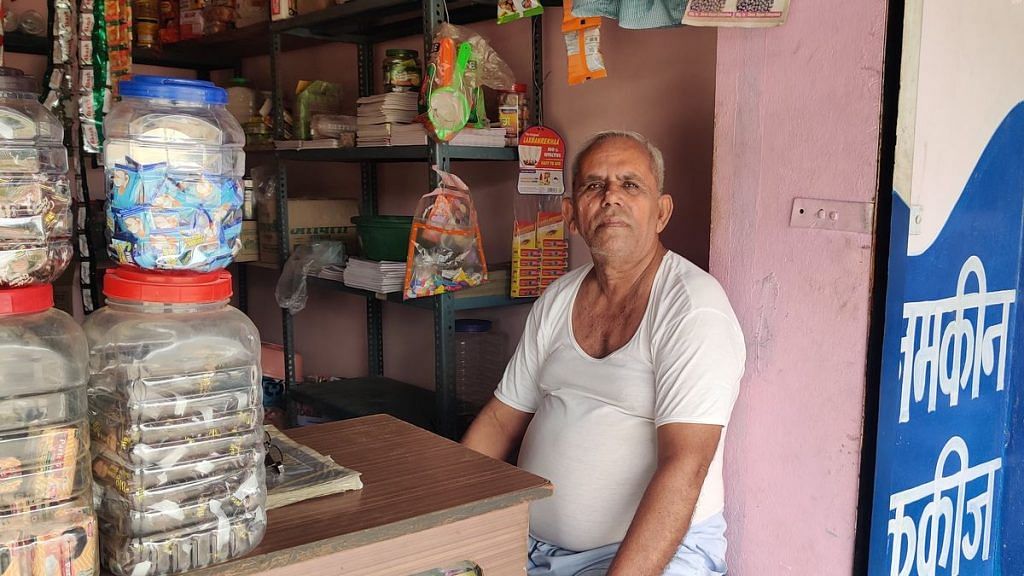
The cops took position across the village in three layers and closed every exit point. Every resident was treated with suspicion and getting past a cordon meant answering a barrage of humiliating questions. The police went on to arrest over 100 people.
“From children to old people, no one was spared by the police. They even looted our houses and took away whatever they found. The whole village was in disarray,” said Banwari Lal, recalling that nightmare-like day while sitting at his shop in a white vest and pyjamas.
Banwari Lal was among those hauled away by the police during the raid, which was overseen in Nayabas by then Chief Minister Barkatullah Khan and Home Minister Kamla Beniwal, known as a tough administrator. He was released four hours later after producing his school certificates.
The villagers were angry, but they knew the scale of the siege was brought on by Nayabas’ reputation as a hotbed of bootlegging and crime. There was a widespread sense of both injury and insult—and this proved to be the catalyst for change.
A new leaf
Until 1972, only a few people from Nayabas held lower-grade government jobs. Among them was KL Mina, a sub-inspector in the Intelligence Bureau. On the day of the raid, he happened to be visiting the village. Watching his friends and neighbours being rounded up and being questioned like a criminal himself at every police cordon impacted him deeply.
“I explained to the villagers that because of some people the entire village has to suffer—those involved in theft and illegal liquor had dominance,” he told ThePrint.
With a fire in his belly to change things, Mina prepared for civil services and cleared the UPSC exam on his first attempt. He claims he is the first IAS officer from the Shekhawati region, which includes Sikar, Jhunjhunu, Neem ka Thana, and Churu.
Mina became a torch-bearer for the village, earning the respect of everyone.
We have achieved the target we set 50 years ago. Nayabas is now an adarsh (model) village. We have not only washed away the stigma but also set an example
-SR Meena, retired ONGC general manager
“When I became an IAS officer in 1975, my voice got strengthened, and people understood the respect that comes with the job. This started the process of education in the village,” said Mina, who retired as Rajasthan’s Additional Chief Secretary in 2005.
His success was a symbol of change for the village. Others too started pursuing status and respect through education and government jobs.
Currently, more than 500 people in Nayabas are employed in government jobs, with hundreds more retired from such positions.
Getting government jobs improved the economic condition of the people. Two decades ago, most homes were kutcha buildings; today, everyone has a pucca house. KL Mina also built the Shrimati Rampyari College, named after his mother, where students from many nearby villages come to study. Earlier, the village had only one school; now it has three, including one exclusively for girls.
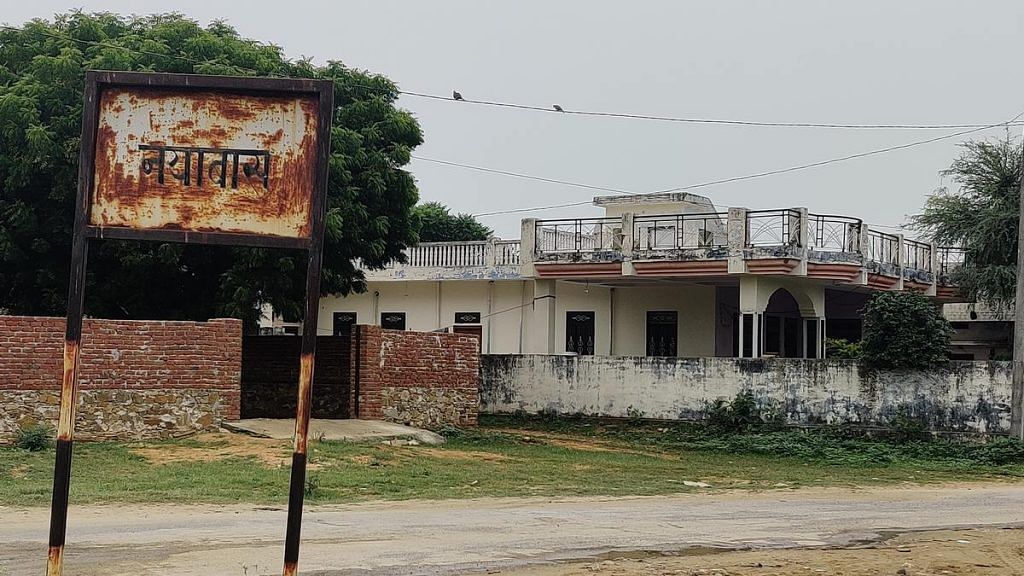
While health facilities and roads still need improvement, the residents are proud of their progress.
“We have achieved the target we set 50 years ago. Nayabas is now an adarsh (model) village. We have not only washed away the stigma but also set an example,” said SR Meena, a retired general manager from ONGC. He is part of the first generation to witness the village’s transformation.
Education not only kept people away from wrongdoings but also helped eliminate superstitious social practices that had persisted for centuries.
“We have also ended grand death feasts and animal sacrifices,” said SR Meena.
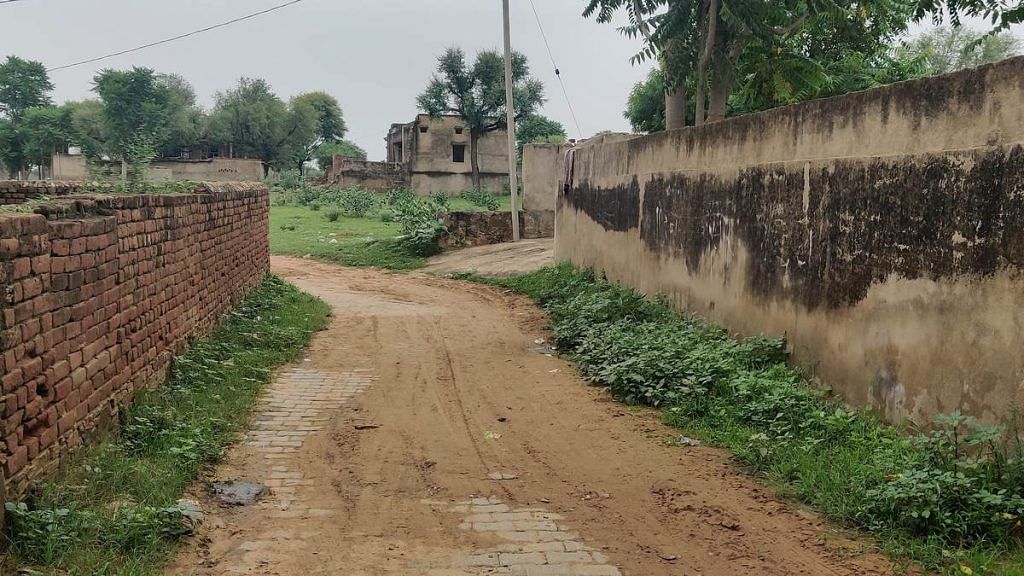
Headlines celebrating the village’s success aren’t uncommon in local media. In the last couple of months alone, there were a few.
One read, “Chori aur sinajori ke liye badnam Nayabas me shiksha ne badle halaat” (Notorious for theft and heft, education has changed Nayabas). Another announced: “IAS-IPS ki factory hai yeh gaon, ek ghatna ne badal di takdeer” (A factory of IAS-IPS, one incident changed the fate of this village).
But now, the younger generation is updating the success script beyond government jobs.
Also Read: UP has the 2nd most women DMs after Tamil Nadu. A surprise ‘pink power’ poster child
Nayabas 3.0
The villagers claim that until 1995, there were no motorcycles in Nayabas. Today, Range Rovers and BMWs are a common sight. They often proudly point out the contrast between their present prosperity and painful past, exchanging stories about their lawless ancestors.
“Around 1920-30, the villagers would give their daughters to only those boys who could steal. Because that was the only source of income,” Ankit Jeph said.
Tales abound about how bands of 25-30 men would set off from Nayabas for long trips across Rajasthan Madhya Pradesh, Haryana, and Punjab, returning with their loot two or three months later.
“Earlier people did not consider it wrong. Theft used to make people’s identity. Big thieves had a reputation. For them, coming back to the village after stealing was like coming for holidays,” Ankit chuckled.
That past is distant now, but the new generation is aware that the future is already knocking at their doors. A realisation is beginning to seep in that they cannot bank on government jobs forever.
“The trend of going toward government jobs that started in the village after 1972 has not changed,” Ankit said, adding that private sector opportunities and a culture of entrepreneurship were yet to be seen in the village.
However, the village is slowly evolving in new ways. And it has a new role model.
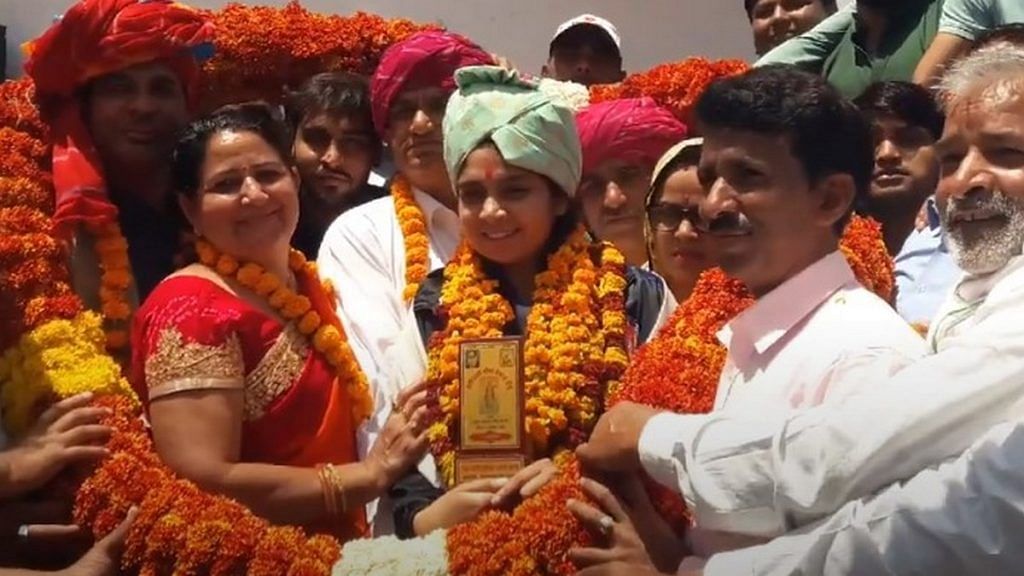
Last year, 20-year-old Saloni Meena grabbed everyone’s attention when she won a gold medal for the third time in the Indo-Nepal International Taekwondo Championship.
“As long as Saloni competed at the national and district levels, no one knew her,” her father Mahendra Meena said. “But after winning international medals, everyone started recognising her.”
Saloni has big plans for the future. She’s thinking of 2028. “My goal is to play in the Olympics for India,” she said.
But for Mahendra, Saloni is already doing something important—redefining the image of Nayabas yet again.
“Earlier, education was the focus for all, but Saloni set an example,” he said. “Seeing her, more and more girls will join sports, which is a big achievement for the village.”
(Edited by Asavari Singh)



